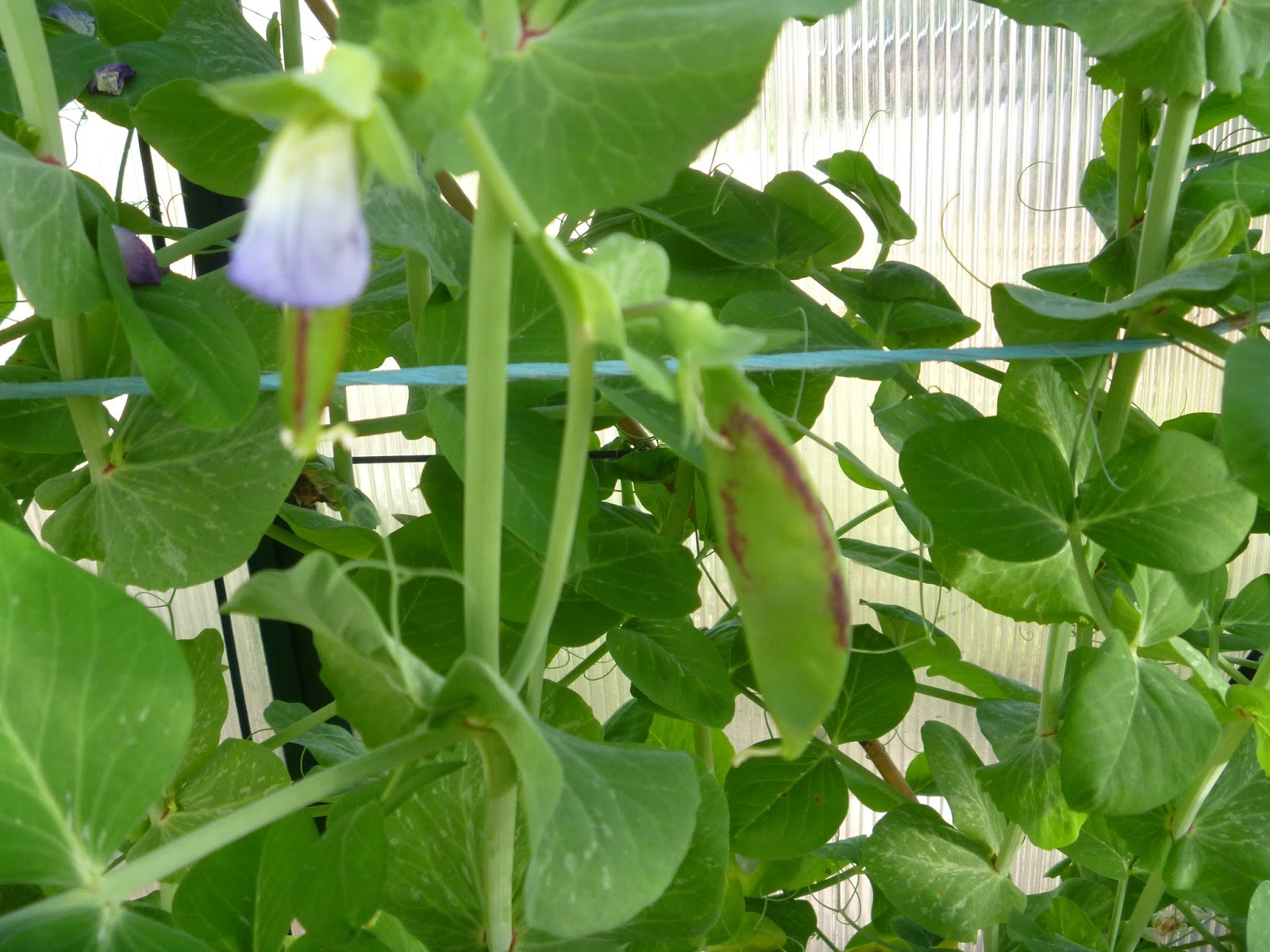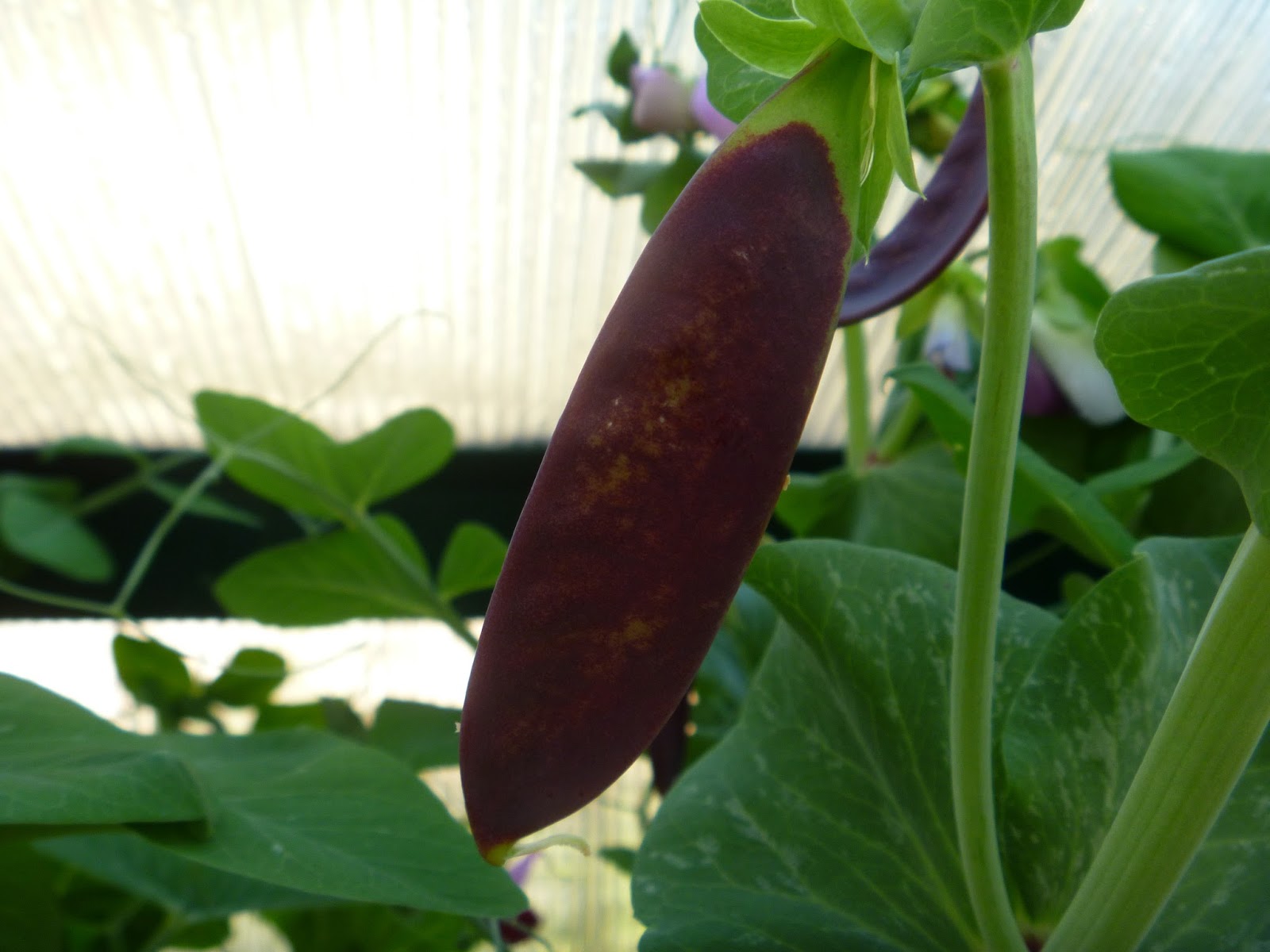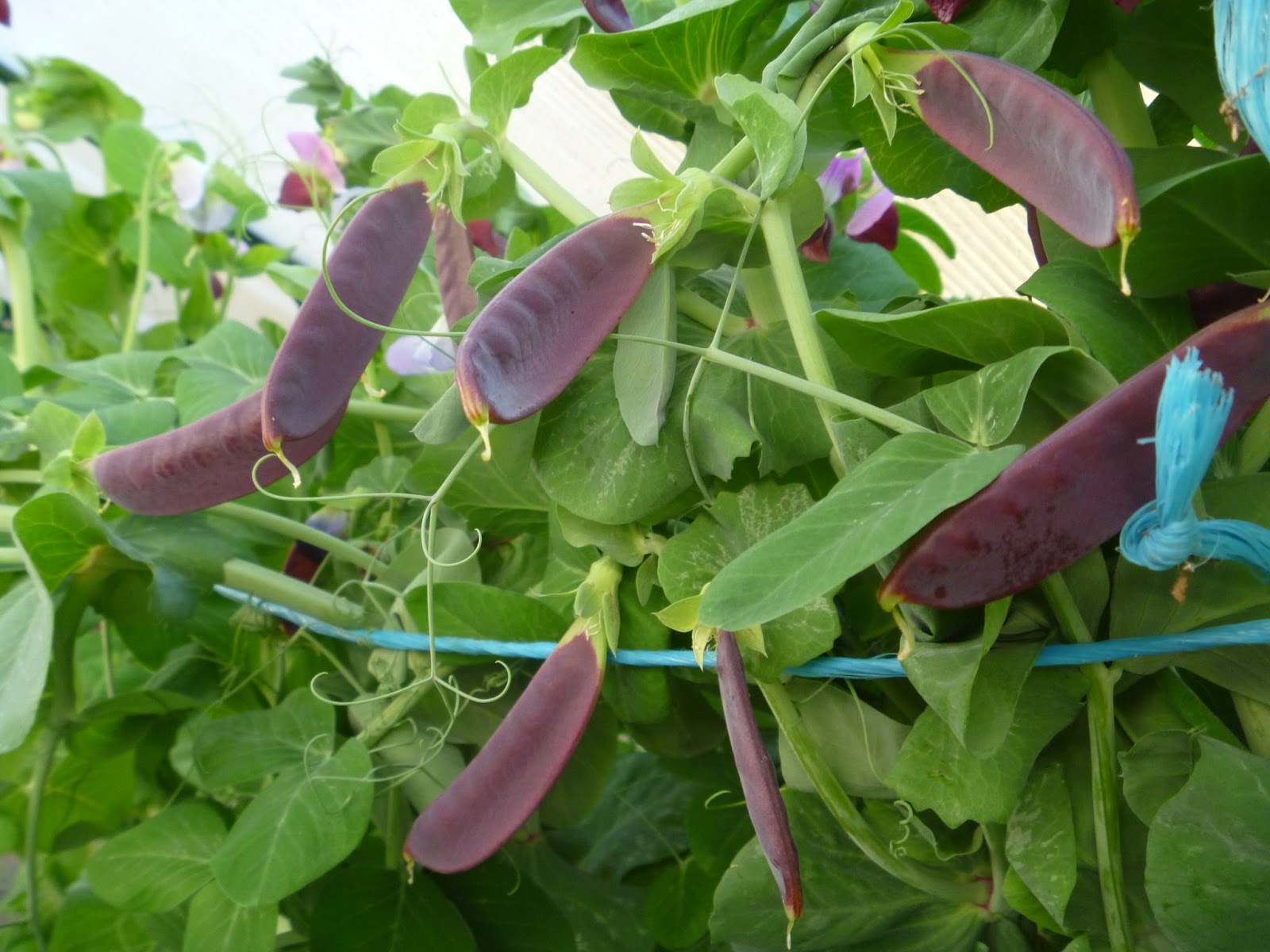|
|
Post by templeton on Jun 13, 2015 19:51:00 GMT -5
I'm growing out about 100 purple snow peas. These have been solid purple for two generations, no green at all. I'm pretty sure my record keeping and seed filing has been accident-free. Of the 45 plants in pod in my greenhouse, one is showing green purple-seamed pods,and another is showing some slight blotchiness in the purple. This 1:45 ratio doesn't really comply with mendelanian genetics. I might have stuffed up my labelling, or a rogue seed might have slipped into the packet, but i don't think so. anyone else have this crop up? PS - I bravely picked one this morning for a taste test - yummy!    T |
|
|
|
Post by keen101 (Biolumo / Andrew B.) on Jun 13, 2015 20:31:15 GMT -5
I'm not the expert T, but since the purples require 3 sets of dominant genes normal mendelan ratios dont really apply. If you cross a purple that is even partially heterozygous you will get at least some green or partially green pods.
Or it is possible environmental factors are interfering.
|
|
|
|
Post by keen101 (Biolumo / Andrew B.) on Jun 13, 2015 20:56:48 GMT -5
|
|
|
|
Post by Darth Slater on Jun 16, 2015 3:16:31 GMT -5
I sell to the very best chefs in traverse city it has become a foodie capitol they all get good write ups and even mention the growers names and also include people on the cutting edge of genetics works...so if I can get any of these awesome peas I can get them featured...I have to have enough to sell is the problem let me know if any of you want to give this a go..it is a little late this season but maybe for next?
|
|
|
|
Post by Joseph Lofthouse on Jun 16, 2015 10:19:28 GMT -5
It would take me three years to grow enough pea seed to offer to the chefs. I have only identified around a half dozen red-podded peas that are truly mangetout and great tasting. They will produce around 120 seeds this year, and perhaps 2400 seeds the year after which is around a pound and a half of seeds. So the third year I could expect around 30 pounds of seed. Not enough to take a city by storm, but enough for a tease.
|
|
|
|
Post by keen101 (Biolumo / Andrew B.) on Jun 16, 2015 10:56:09 GMT -5
It's certainly too early to do anything much. If josephs produces red pods it will be the first red-podded peas i've grown, whether tasty or not. Even if not, a quick cross to Opal Creek could provide a huge sweetness boost in only 1 generation while still producing red pods.
I hope to eventually have enough seed of a desirable variety that i could share with the small local farms. That could help get them into food places in my area more quickly.
|
|
|
|
Post by templeton on Jun 16, 2015 17:15:36 GMT -5
That eatmorepeas FB site is quite interesting. The guy who brought us the sugar snap, Calvin Lamborn is working on all sorts of interesting stuff, and has given me a few ideas.  T |
|
|
|
Post by steve1 on Oct 11, 2015 6:10:23 GMT -5
Hi Templeton,
from what I've read the Pur purple gene behaves a bit differently. Lamprecht - who did extensive work on peas (mostly in German) identified three degrees of pod colouration related to multiple alleles at the pur locus. Pur with full colouration, pur a and pur b with progressively less colouration and pur with no colouration. My guess is you've had a spontaneous mutation at this locus. Let me know if you want the reference.
Cheers
Steve
|
|
|
|
Post by oxbowfarm on Oct 11, 2015 9:39:57 GMT -5
Hi Templeton, from what I've read the Pur purple gene behaves a bit differently. Lamprecht - who did extensive work on peas (mostly in German) identified three degrees of pod colouration related to multiple alleles at the pur locus. Pur with full colouration, pur a and pur b with progressively less colouration and pur with no colouration. My guess is you've had a spontaneous mutation at this locus. Let me know if you want the reference. Cheers Steve Spontaneous mutations are possible at any time at any locus, but they are statistically improbable. If these peas have only been pure breeding for purple for two generations, then there are still many heterozygous loci. It is more likely that some anthocyanin deposition modifier genetics popped up in a few of the peas than having two separate spontaneous mutations, not that it is impossible for that to happen. |
|
|
|
Post by raymondo on Oct 19, 2015 15:01:37 GMT -5
Three genes, multiple alleles at some loci ... I'd say just allele shuffling. To completely eliminate the unwanted non-dominant alleles at three loci, especially when there are a number of them, would take a serious amount of work T.
|
|
|
|
Post by toad on Oct 20, 2015 12:10:43 GMT -5
Some of the old swedish purple podded fieldpeas have a well known tendency to make a few purple-splashed og pure green pods. The inherited instruction is to rogue them out, but they still show up, even when people grow them in small garden populations for years. Annoying or charming? It's a personal choice :-)
|
|
|
|
Post by philagardener on Oct 20, 2015 16:58:36 GMT -5
This is true for a purple podded parsley pea line that I have grown (traceable, I believe, through Alan Kapular). I have often wondered why a line with so many stacked recessives would not come true for pod color, and those were the instructions that came along with it as well. Quite the mystery!
|
|
|
|
Post by templeton on Oct 20, 2015 19:44:30 GMT -5
The JIC pisum database (thanks galina for reminding me of this) notes for the Pur gene "Purple pods when together with Pu. Four alleles reported: Pur, uniform purple; pur<a, major part purple; pur<b, less colour on pod, may limit colour to funiculus. Character can be variable in expression and unstable. Studies have show that a pigmented funiculus differentiates the presence of Pur from Pu (non-pigmented)." So there's the instability. T |
|
|
|
Post by keen101 (Biolumo / Andrew B.) on Oct 20, 2015 20:03:54 GMT -5
Then there is random changes in expression of anthocyanin pigments in general often because of climate conditions. Heat is one that often causes them to express less.
|
|
|
|
Post by philagardener on Oct 20, 2015 20:09:50 GMT -5
Here's an idea, templeton : You might have modifiers close (linked) to Pur that are being shuffled into new combinations at low rates by crossing over in meiosis. That could explain statistically rare but real events that would not follow Mendelian ratios, that would reoccur phenotypically over time (unlike random mutations), and would be difficult to eliminate permanently by ongoing selection. I would cull plants that have characteristics you don't want (or at least keep those separate from your bulk seed collection) to keep the line looking the way you want. |
|